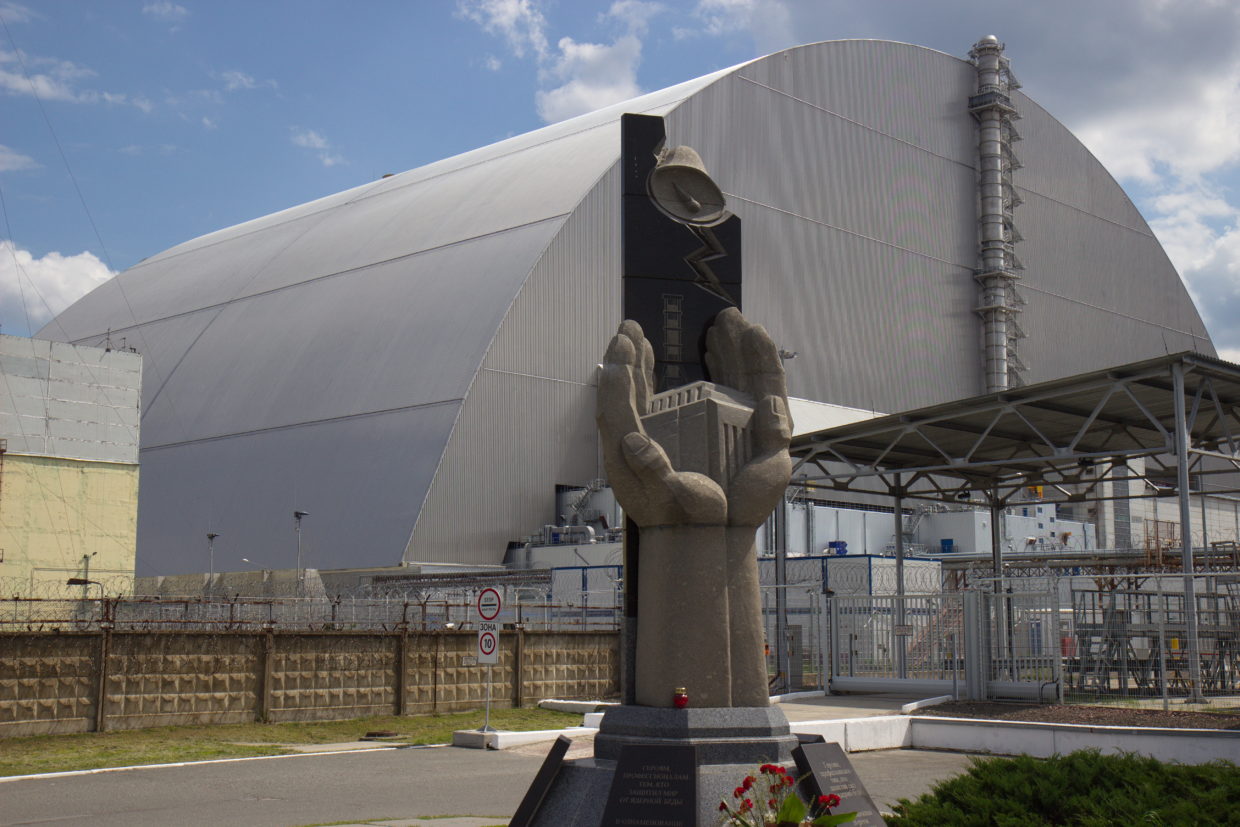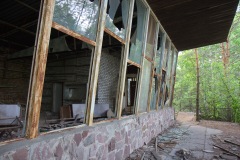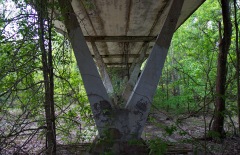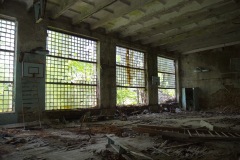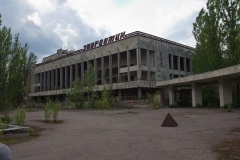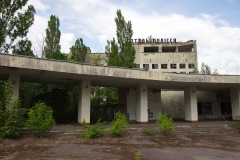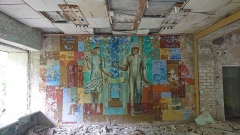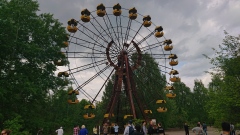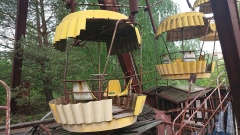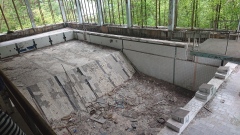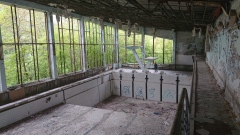Der Nuklearunfall von Tschernobyl im Jahr 1986 war das erste weltgeschichtliche Ereignis, das sich im zarten Alter von 4 Jahren in meiner Gedächtnis gebrannt hat. Seitdem fasziniert mich dieses Thema mit seiner Melange aus (nicht wirklich traumatischer) Kindheitserinnerung, großtechnischer Anlage, Sowjetgeschichte und natürlich größtem anzunehmendem Unfall und ich hatte schon länger den Traum, die Tschernobyl Sperrzone und den havarierten Reaktor zu besuchen – wahrscheinlich bevor das Wort „Dark tourism“ überhaupt erfunden wurde.
Im Jahr 2019 hatte ich dazu tatsächlich die Gelegenheit (in der Rückschau die letzte, danach kam Corona und dann der russische Überfall auf die Ukraine…) und designiert als „Student“ (rein touristische Besuche sind nicht gestattet) sind wir von Kiew mit dem einem Bus (Anbieter: https://chernobyl-tour.com) die ca. in die 130 km in die Sperrzone gefahren.
Teil der Tour war der Besuch der verlassenen Ortschaft Zalissya, der Radarstation Duga-1, der Stadt Pripyat sowie natürlich des Reaktors mit Sarkophag um den havarierten Block 4 – siehe Fotos.
An dieser Stelle soll kein ausführlicher Reisebericht folgen (dazu gibt es genug Material von Travel-Vloggern), aber ein paar für mich überraschende und interessante Fakten will ich an dieser Stelle teilen:
- Die Strahlenbelastung ist wahnsinnig ungleich verteilt – manche Stellen sind ziemlich unbedenklich aber bei der kurzen Fahrt durch den „Red Forest“ spielt der Geigerzähler verrückt – die Tatsache, dass das russische Militär dort Schützengräben hat ausheben lassen, sagt mehr aus über die aktuelle „russische Seele“ als jede Rede von Putin
- Das bekannte Riesenrad ist von der Stange – dasselbe Modell steht zum Beispiel auch in Dnipro und ist dort ganz normal im Einsatz
- Das Schwimmbad erinnert mich mit dem schrägen Dach und dem 5-Meter-Sprungturm etwas an der Hallenbad in Krumbach, wo wir als Kinder öfters waren – genauso wie die Kids in Pripyat bis zum 26. April 1986…
- Zum Mittagessen waren wir einfach in der Tschernobyl-Kantine – auf dem Gelände arbeiten schließlich auch heute noch durchgehend Menschen
Beim Verlassen der Sperrzone mussten wir natürlich durch eine Schleuse und wurden auf mögliche Kontamination geprüft, zudem hatte jeder ein Dosimeter mit dabei – laut erhaltenem Zertifikat habe ich eine unbedenkliche Strahlendosis von 0,003 mSv abbekommen.
The Chernobyl nuclear accident in 1986 was the first world-historical event that burned itself into my memory at the tender age of 4. Since then, I have been fascinated by this topic with its mixture of (not really traumatic) childhood memories, large-scale technology, Soviet history and, of course, nuclear disaster. I had long dreamed of visiting the Chernobyl exclusion zone and the damaged reactor – probably before the word „dark tourism“ was even invented.
In 2019, I actually had the opportunity to do so (in retrospect the last one, after which came Corona and then the Russian invasion of Ukraine…) and designated as a „student“ (purely tourist visits are not permitted) we took a bus (provider: https://chernobyl-tour.com) from Kiev the approx. 130 km into the exclusion zone.
Part of the tour was a visit to the abandoned village of Zalissya, the Duga-1 radar station, the town of Pripyat and, of course, the reactor with the sarcophagus around the damaged Block 4 – see photos.
I won’t go into a detailed travel report here (there’s plenty of material from travel vloggers), but I would like to share a few surprising and interesting facts:
- The radiation exposure is incredibly unevenly distributed – some places are quite harmless but the Geiger counter goes crazy on the short ride through the „Red Forest“ – the fact that the Russian military had trenches dug there says more about the current „Russian soul“ than any speech by Putin
- The well-known Ferris wheel is off the shelf – the same model can also be found in Dnipro for example and is in normal use
- With its sloping roof and 5-metre diving platform, the swimming pool reminds me a little of the indoor pool in Krumbach, where we often went as children – just like the kids in Pripyat until 26 April 1986…
- We just went to the Chernobyl canteen for lunch – after all, people are still working on the site all the time today
Despite all the dark history, there are also trivial moments – for example, we simply went to the Chernobyl canteen for lunch (after all, people work on the site all the time).
When we left the exclusion zone, we naturally had to go through an airlock and were checked for possible contamination, and everyone had a dosimeter with them – according to the certificate I received, I received a harmless radiation dose of 0.003 mSv.

